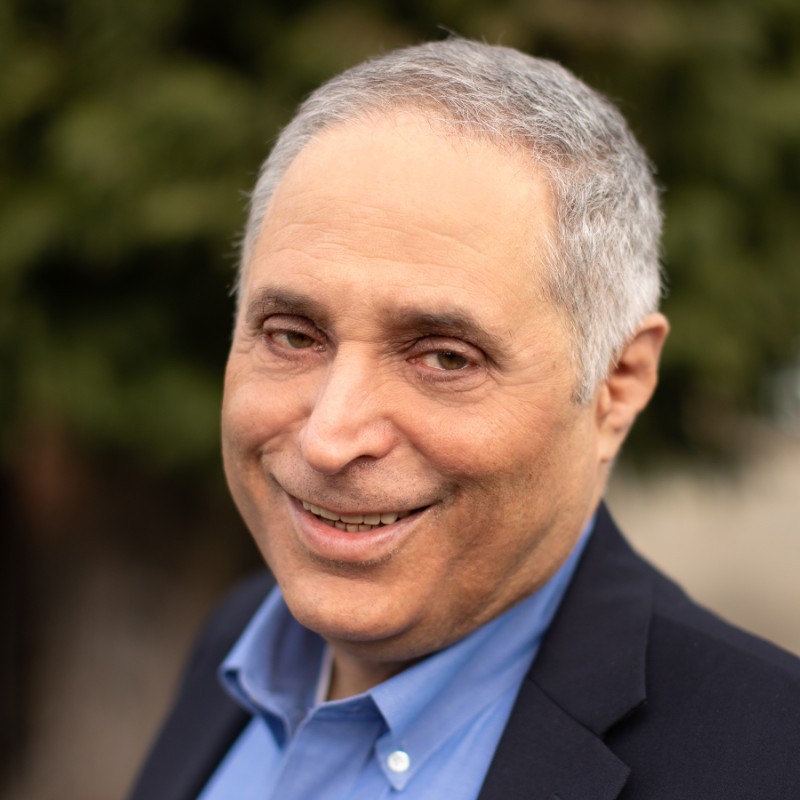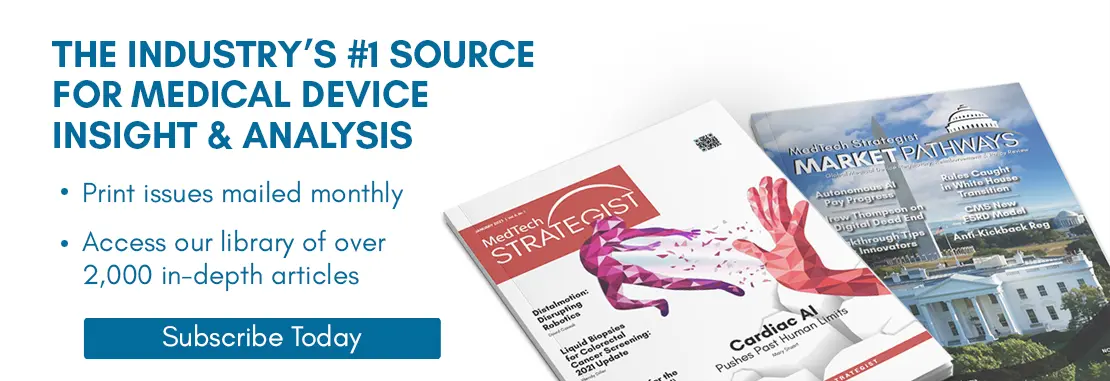ARTICLE SUMMARY:
Federal agencies including FDA have retreated from various forms of public and stakeholder engagement during the opening weeks of the Trump administration. In medtech, that’s starting to impact global standards development efforts, among other technical activities underpinning regulation and product development.
US federal agencies like FDA have pulled back from public engagement since President Trump took office January 20, canceling meetings, halting communications, and taking down targeted documents and webpages. How precisely the new Trump administration will change FDA device center (CDRH) direction and policies remains to be seen. But several weeks into the new presidency, one of the most palpable shifts has been the sudden absence of agency experts, and certain agency resources, in the public sphere.
|
One illustrative example is in the realm of standards development. Sarah Moeller, a clinical research expert and consultant (The Greenlight Group) experienced FDA’s absence recently when she dialed in to a monthly meeting of experts involved in developing international medtech standards. Moeller is the co-chair of an Association for the Advancement of Medical Instrumentation (AAMI) working group charged with establishing the US industry position on ISO standards for medical device clinical research. Specifically, she serves on BE Working Group 4, whose principle claim to fame is its work on the frequently cited ISO 14155 standard for “clinical investigation of medical devices for human subjects—good clinical practice.” 
Every month, the co-chairs of all the AAMI working groups, which oversee development of standards tied to a vast number of technical issues impacting medtech firms, meet to provide status updates. But at the late January meeting a key participant was missing. “We noticed that our head co-chair of all the groups who's from FDA wasn't present,” Moeller said in an interview. The participants also communicated that they had not heard from agency representatives who serve on their individual working groups. Ultimately, the working group chairs were informed verbally that the FDA “will not be responding with communications or participating in policy writing work at this time,” she relayed.
Moeller was taken aback because FDA experts typically play a pivotal role in the standards development process. Standards, which are intended to promote global consensus and efficiency, inherently rely on broad international, public-private collaboration. FDA experts are very active in standards activities with an eye toward ensuring that the technical processes and procedures align with US regulations. As a result, FDA recognizes many new and updated standards soon after they are completed, and companies can then employ the standards to streamline regulatory submissions. (See “Making Standards Work for You With Elisabeth George,” Market Pathways, June 5, 2024.) To the extent that other authorities, such as the EU, also harmonize the standards to their systems, companies can benefit from expedited global market access and compliance.
Moeller says it’s fortunate that her working group and global collaborators already completed all substantive work, incorporating FDA’s input, on a significant revision of the 14155 standard. “We just finished all editing, all the final comments, and having our final version of 14155,” and that should be published soon, she notes.
Another highly anticipated, completely new standard that the working group is engaged in, however, is not in the same position. That’s the pending ISO 18969 standard on “clinical evaluation of medical devices.” As currently envisioned, Moeller explains,18969 will address “what happens before, during, and after” the clinical investigations described in the 14155 standard, detailing how to fit clinical activities “into the overall product life cycle from R&D, risk identification, and the FMEAs [Failure Modes and Effects Analysis], all the way through complaints, once it's in postmarket surveillance mode.”
The expected standard was recently circulated as a committee draft. There is currently a three-week comment period open through the end of February for US companies and FDA to weigh in on the document. The goal is to reach consensus on a set of collated US comments to inform upcoming global discussions toward producing a final standard. It’s an unfortunate time to lose FDA’s voice, Moeller suggests. “We have three meetings in March set up to review all the comments from the US. FDA sits at the table and provides feedback on whether they think a comment should be accepted or rejected, just like any company does, and the agency provides alternate language to help with clarity when needed.” There is always healthy debate between FDA and industry when standards are in development, but ultimately, if the agency doesn’t agree with particular language “that gives everybody pause globally” and often triggers more work to reach agreement, she explains.
If FDA’s absence persists, the working groups have the latitude to move forward on the standard. However, it could potentially lead to a delay in the development of 18969 and other pending international standards if they decide they don’t want to proceed without incorporating the agency’s input.
 Leo Eisner, principal compliance and regulatory consultant with Eisner Safety Consultants, is serving as a convenor of the User Interface Aspects fragment, one of the 12 fragments for the fourth-edition update to the major IEC 60601-1 standard on general requirements for basic safety and essential performance for medical electrical equipment. He has received the same messages that FDA officials can’t currently comment or communicate about standards development.
Leo Eisner, principal compliance and regulatory consultant with Eisner Safety Consultants, is serving as a convenor of the User Interface Aspects fragment, one of the 12 fragments for the fourth-edition update to the major IEC 60601-1 standard on general requirements for basic safety and essential performance for medical electrical equipment. He has received the same messages that FDA officials can’t currently comment or communicate about standards development.
He is looking toward a meeting scheduled for late March/early April in the Washington, DC, area among 60601-1 fourth-edition stakeholders. If FDA experts don’t attend, the process will still move forward, Eisner suggests, but the agency’s absence will be an impediment. FDA previously committed about 18 people to the project, some of whom “have significant impact in the process,” he says.
At the moment, it’s not clear how long FDA experts will be out of contact with outside experts on standards and related issues. The agency has not responded to requests for comment from Market Pathways on its going-forward policy on standards development work or broader communications. Under a January 21 Trump administration memorandum, HHS issued an official “pause on issuing documents and public communications” that was supposed to extend only through February 1. But outside experts involved in standards work, including Moeller and Eisner, say they haven’t gotten the impression that agency officials will be reengaging imminently, although they acknowledge the situation is unpredictable.
The standards experts, nonetheless, are hoping for a resolution as soon as possible. Eisner underscores that FDA is the “biggest regulator involved in standards work around the world.” If they drop out of the process for an extended period, he says, it will “have a massive impact globally on standards development.”
Moeller is trying to make the public case to policymakers that FDA engagement in these types of activities is beneficial to US companies, the domestic economy, and patient care. “Having FDA at the table for policy work is a competitive advantage for the US,” she notes, “both in doing market applications globally and for other companies coming to the US and selling their products here and making them available to Americans. Globally accepted and harmonized language can reduce the number of clinical trials and reduce time to market, globally, so it makes sense that the US regulators have a voice in the process from the get-go.”
One gathering to keep an eye on as a potential signal to how deep and long FDA’s disengagement on global regulatory matters might run is coming up in March. The International Medical Device Regulators Forum (IMDRF) is holding its next biannual meeting March 10-14 in Tokyo. Although FDA handed over the rotating chair of IMDRF’s management committee to Japan’s Pharmaceuticals and Medical Devices Agency for 2025, the US agency perennially plays a leadership role in the workings of IMDRF. It will be notable if FDA reduces its presence and participation at the meeting, some experts suggest.
What Else Is Missing?
The agency, meanwhile, is postponing other meetings with stakeholders on a range of other topics outside of the standards realm. It’s also continuing efforts to remove or edit materials from its website, primarily with an eye to comply with Trump executive orders outlawing diversity, equity, and inclusion initiatives and any discussion of gender identity as distinct from biological sex. Here are some FDA medtech gatherings and documents impacted by the administration’s rapid pullback of recent weeks:
RWE meeting. CDRH canceled a planned January 30 webinar intended to update stakeholders on its Real-World Evidence program activities. The center issued a draft guidance in December 2023 to update its policies for employing RWE to support regulatory decisions.
AI guidance webinar. The center postponed a planned February 18 webinar to discuss its recently published draft guidance on lifecycle management and marketing submission for AI-enabled device functions.
CDS software guidance edited. The agency over a weekend temporarily removed its 2022 guidance outlining when clinical decision support software is considered a regulated device and reposted it unchanged except the word “gender” was removed in two spots describing patient population characteristics.
DEI deletions. Soon after Trump took office, the agency removed multiple documents from its website tied to DEI and/or referencing gender as a distinct concept from sex. Most impactfully, it removed its 2024 draft guidance on diversity action plans in clinical studies, calling into question whether the administration plans to implement a congressional requirement that device and drug firms submit the action plans as part of the FDA review process (although HHS Robert F. Kennedy Jr. appeared to commit to finalize the guidance document during one of his nomination hearings). Other deleted documents include the January 2025 draft guidance on evaluation of “sex-specific and gender-specific data” in device studies; its August 2024 discussion paper on “health equity for medical devices”; and its 2022-2025 Strategic Priorities, which emphasizes promoting a diverse workforce and advancing health equity.
Staff stable? The other potential shoe to drop is the reduction in staffing resources at FDA. CDRH is supposed to hire up to 83 full-time equivalents in fiscal year 2025 under the MDUFA V agreement, but the administration immediately instituted a federal hiring freeze, a return-to-office order, and sent an offer to a large swath of federal employees incentivizing resignations. It’s not clear what proportion of employees at FDA or other agencies will take the offer. One high-profile departure from CDRH has been Troy Tazbaz, who was director of the Digital Health Center of Excellence and announced on LinkedIn his last day was February 1.
What Is Happening: Authorizations, Safety Alerts, and Inspections
Behind-the-scenes activity has by no means stopped at FDA, however. In particular, the agency is continuing to authorize new devices. It cleared 86 510(k)s and authorized 45 PMA supplements between January 20 and January 31, according to FDA’s databases.
On the safety side, the device center has issued one public communication in recent weeks. Specifically, it circulated concerns January 30 about cybersecurity vulnerabilities, including the potential for unauthorized remote control, in certain patient monitors from the companies Contec and Epsimed. Also, facility inspections continue, with about 20 FDA site visits conducted from January 21-24 (the latest data available on FDA’s public compliance dashboard), mostly of food and biologics facilities, but at least one device inspection.
One important factor that will naturally inhibit some activity at agencies during any transition in power is the lack of permanent leadership in place. At the moment, a former CDRH diagnostics official, Sara Brenner, is serving as acting FDA commissioner. Robert F. Kennedy Jr. is still awaiting a confirmation vote in the Senate to serve as secretary of HHS. After that, lawmakers are expected to consider Marty Makary, MD, Trump’s nominee to lead FDA. Once those posts are filled, it will provide an opportunity for a reset in engagement and policy direction from the agency. But, in the very short term at least, it doesn’t appear FDA is going to play much of a role in public discourse on medtech standards and policy.

